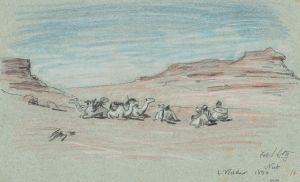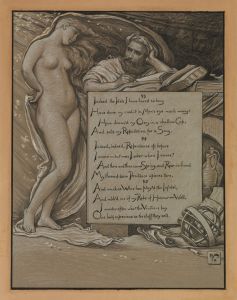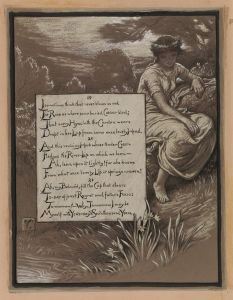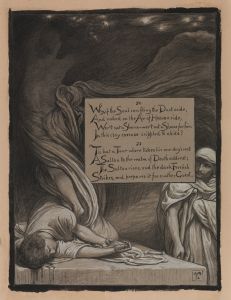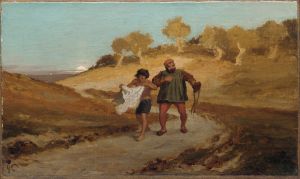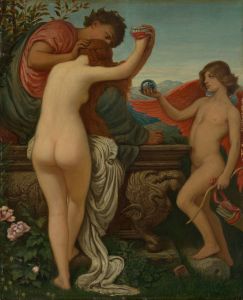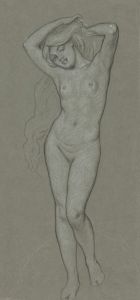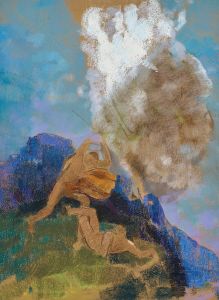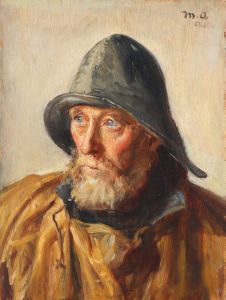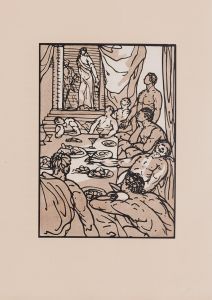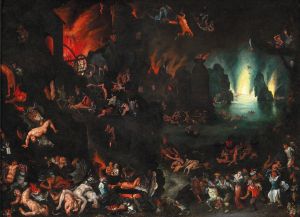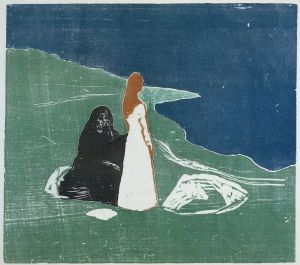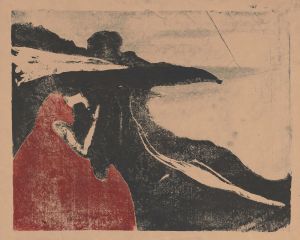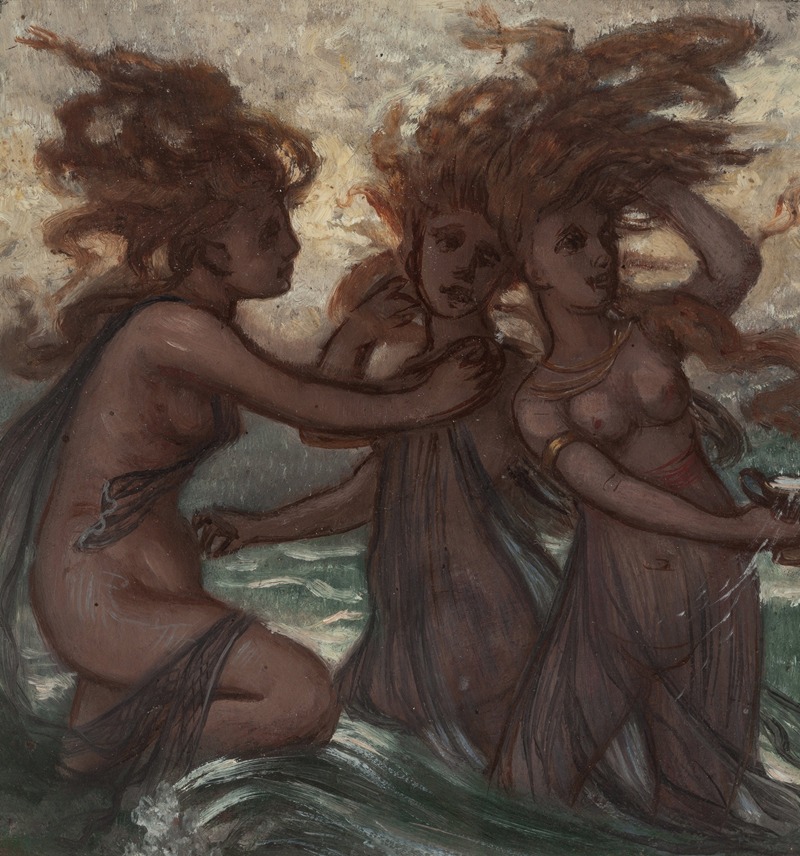
The Phorcydes
A hand-painted replica of Elihu Vedder’s masterpiece The Phorcydes, meticulously crafted by professional artists to capture the true essence of the original. Each piece is created with museum-quality canvas and rare mineral pigments, carefully painted by experienced artists with delicate brushstrokes and rich, layered colors to perfectly recreate the texture of the original artwork. Unlike machine-printed reproductions, this hand-painted version brings the painting to life, infused with the artist’s emotions and skill in every stroke. Whether for personal collection or home decoration, it instantly elevates the artistic atmosphere of any space.
Elihu Vedder was an American symbolist painter, born in 1836 and known for his mystical and allegorical works. One of his notable paintings is "The Phorcydes," which reflects his interest in mythology and the symbolic representation of ancient tales. Vedder's work often delves into themes of fate, destiny, and the supernatural, and "The Phorcydes" is no exception.
"The Phorcydes" draws its subject from Greek mythology, specifically focusing on the Graeae, also known as the Phorcydes. In mythology, the Graeae were three sisters who shared one eye and one tooth among them. They were the daughters of Phorcys and Ceto, sea deities, and were often depicted as old women from birth. The Graeae are best known from the myth of Perseus, who sought their help to find the location of the Gorgons, including Medusa. By stealing their shared eye, Perseus compelled them to assist him.
Vedder's depiction of the Graeae in "The Phorcydes" captures the eerie and mysterious nature of these mythological figures. His style is characterized by a strong use of symbolism and a dreamlike quality, which is evident in this painting. The composition likely emphasizes the otherworldly and ancient aspects of the Graeae, aligning with Vedder's interest in exploring the mystical and the unknown.
Elihu Vedder spent a significant portion of his career in Italy, where he was influenced by the Renaissance and classical art, as well as the burgeoning symbolist movement. His works often reflect a blend of these influences, combining classical themes with a modern, symbolic interpretation. "The Phorcydes" fits within this framework, as it reinterprets a classical myth through a symbolist lens, inviting viewers to ponder the deeper meanings and implications of the story.
Vedder's art was well-received in his time, and he was part of a broader movement of artists who sought to explore the symbolic and the mystical in their work. His paintings, including "The Phorcydes," are characterized by their intricate detail, rich colors, and the ability to evoke a sense of mystery and contemplation.
While specific details about the creation and exhibition history of "The Phorcydes" are not extensively documented, Vedder's overall body of work remains influential. His paintings are housed in various collections, including the Smithsonian American Art Museum, which holds a significant number of his works. Vedder's legacy as a symbolist painter continues to be appreciated for its depth, complexity, and the unique way he brought mythological and allegorical subjects to life.
In summary, "The Phorcydes" by Elihu Vedder is a testament to the artist's fascination with mythology and symbolism. Through his depiction of the Graeae, Vedder invites viewers to engage with the timeless themes of fate and destiny, rendered through his distinctive artistic vision.





